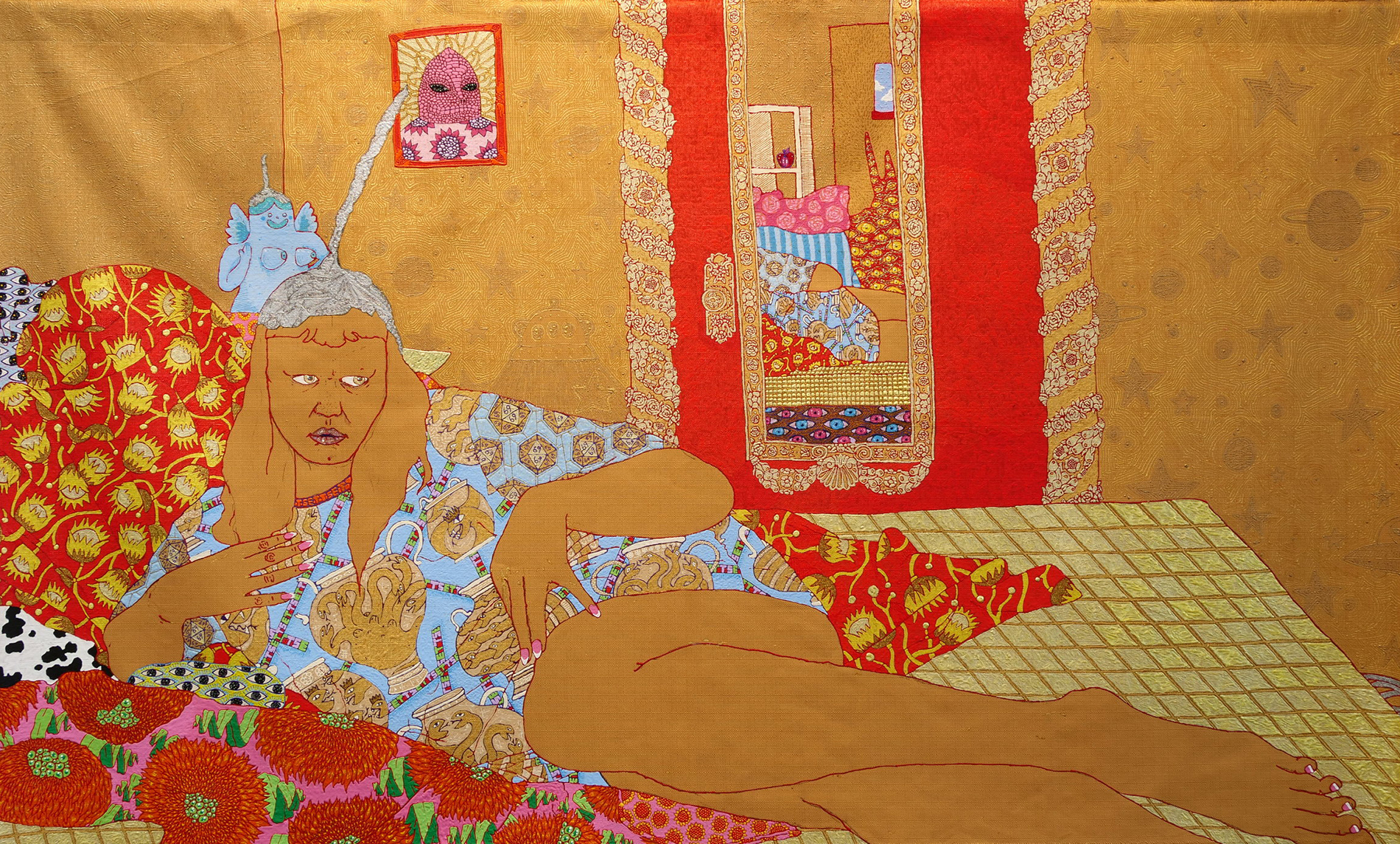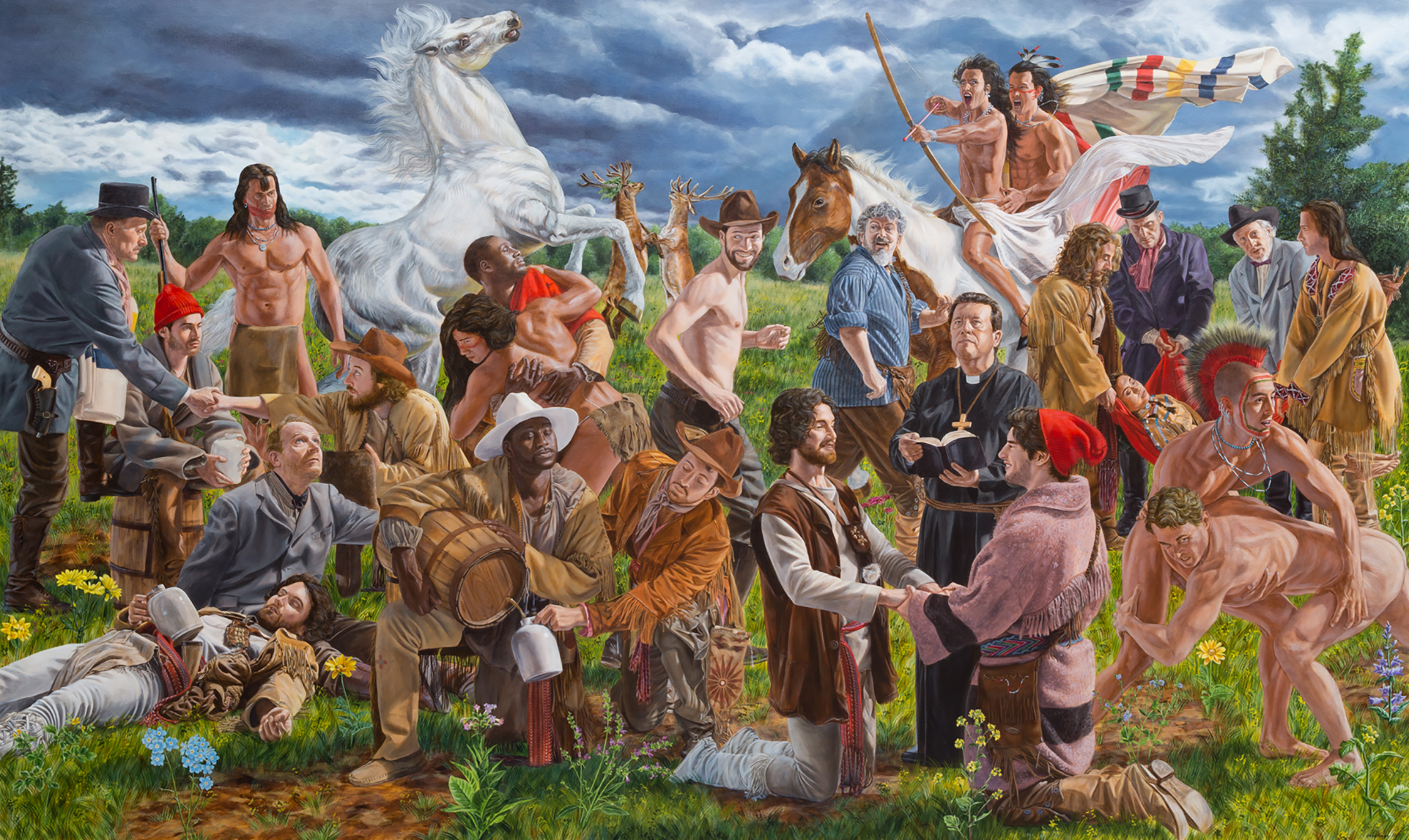Craig Calderwood is Defying the Gender Binary

Self-taught artist Craig Calderwood is challenging traditional views of the gender binary through their mixed-media artworks.
Cover photo: LENTICULAR CLOUDS, dimensional paint, thread and upholstery fabric, by Craig Calderwood (2018). Via the artist’s website.
This article is part of my 30 Living Queer Artists Worth Celebrating in 2019 series. June is Pride Month, commemorating the international gay rights movement that began June 28th, 1969, with the Stonewall riots of New York. 2019 marks the 50th anniversary of the event. I’m celebrating all month long!
WARNING: The following article features and/or discusses homophobia, AIDS, and murder.
Craig Calderwood
Self-taught San Francisco-based artist Craig Calderwood is defying traditional views of the gender binary through their mixed-media artworks. Calderwood’s oeuvre is filled with acidic tones and contrasting patterns, representing often surreal visions of their own queer life.
Materials
Like Columbian-American Maria E. Piñeres, Calderwood uses textile to great effect, but Calderwood adds a variety of other materials as well. The medium represents a social dimension of the work. They explain, “I’ve always been interested in materials anyone can use or find around the house or at work. Right now I am really focused on low-craft materials like polymer clay, pipe cleaners, fabric paints. Cheap materials. Things I used to help me negotiate socializing as a kid.”
WE ALL KNEW
In WE ALL KNEW Calderwood reimagines American artist and poet David Wojnarowicz’s iconic Untitled (One day this kid...), a photographic print of a queer child surrounded by a poem detailing how the world will eventually overwhelm him.
Wojnarowicz’s Untitled (One day this kid...) was part of Wojnarowicz’s activism for the gay rights group ACT UP. It is a scathing indictment of the arbitrary societal differences between gay and straight people in the midst of the AIDS Crisis. This work was finished a year before Wojnarowicz’s death from AIDS-related complications in 1992.
Calderwood recreates the concept for a new era, in which AIDS/HIV is largely eradicated and survivable, and in which same-sex marriage in America is legal. Instead of the differences between gay and straight, Calderwood’s WE ALL KNEW challenges the preconceived notions of gender binary.
Whereas Wojnarowicz’s kid is blissfully unaware, Calderwood’s looks absolutely frightened. Calderwood also replaces Wojnarowicz’s words with an elaborate mix of patterns. In WE ALL KNEW, the child is surrounded by a hectic combination of flowers, scorpions, snakes, and fishing lures.
Lure making carries significance for Calderwood: “It’s a masculinized craft act, which is strange to me because it [can be] just as fussy as making jewelry.”
This work is vital in the effort to normalize the trans community. According to the Southern Poverty Law Center, by percentage, the LGBT+ community is the marginalized group most often violently attacked in the United States. Since 2013, there have been over 128 killings of trans people across the country, of whom 80% were people of color.
In 2018, the Human Rights Campaign called anti-transgender violence a national epidemic. In addition to murder, trans people are often maligned and mistreated at work, school, and their own homes. Hopefully, the increased visibility of trans people, and the normalization of their fears, dreams, and desires, will be enough to change attitudes.
Craig Calderwood’s art is so unique. There’s a vibrant nonchalance in the work. Every figure is perfect in their oddity. I am so fascinated by Calderwood’s style and I am eager to see more. Follow Calderwood on Instagram for more!












